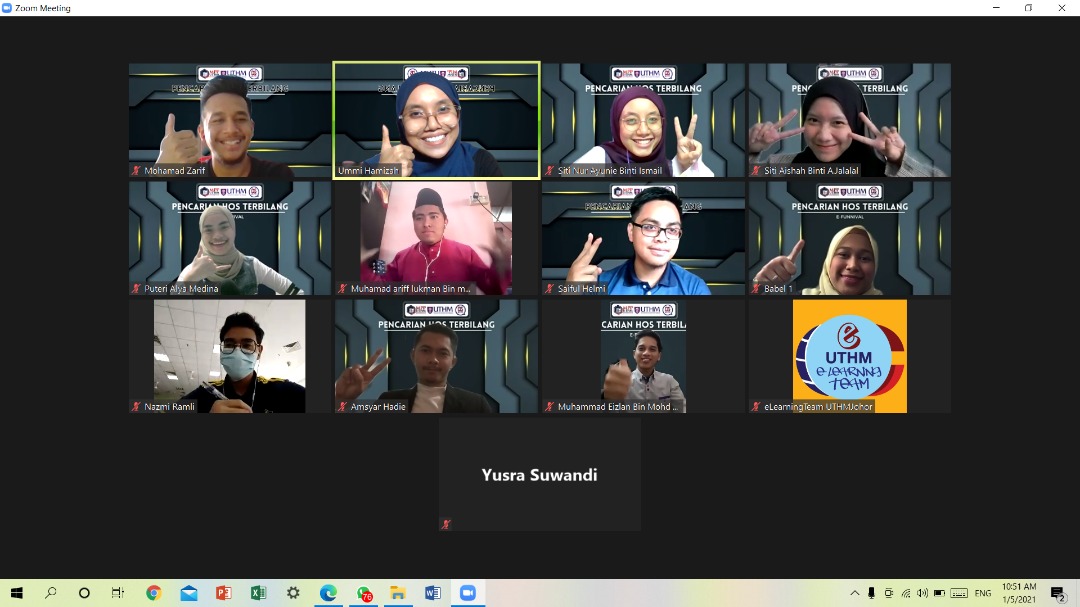
Having the experience attending the Problem-based learning (PBL) training, I would express it as fruitful and constructive exposure to learn a new method in teaching and learning. PBL was first introduced and practised in medical schools and later adapted in various fields of studies, including language lessons. However, it was not that widely introduced to language educators, which, in my opinion, would be beneficial for students to acquire language skills more effectively by applying this learning approach. I believe by implementing PBL in language lessons, students will be better equipped and well-adjusted with all the skills they are expected to gain to meet the learning outcomes.
By far, most educators utilise the conventional lecture approach, which usually starts with knowledge/ skills sharing session by them, followed by problem analysis such as quizzes, tests or just the usual assignments, and end with solutions to the problems. PBL, in contrast, is different in terms of the role of the educators and students as well as the learning procedures.

Conventional lecture procedures

PBL approach procedures
Before PBL is imposed on the lesson, there should be a clear comprehension of the roles of both educators and students and how the class procedures will be conducted. This is to ensure that confusion or misunderstanding does not happen as well as to navigate an effective learning environment and outcome. PBL is student-centred learning which is different from the conventional lecture-based approach. What is meant by the student-centred approach here is, students act as active individuals and are responsible for their learning instead of the teacher dominating the teaching, and students have very little opportunities to participate, as applied in the conventional lecture. In PBL, educators will act as facilitators who will assist and assess students to make sure they are on the right track throughout the lesson. PBL setting, moreover, will need students to work in small groups. This change of role and setting, therefore, I believe will foster their spirit towards learning as they will get the opportunity to communicate and work comfortably in acquiring knowledge.
Problem-based learning, as clearly stated in the term, is a learning process based on a problem. The problem presented to students is also known as the ‘trigger’, should relate to real-world problems and the learning (or topic) outcome. A problem in PBL is given as the catalyst or stimulus for learning that represents higher-order thinking skills and students’ prior knowledge of the real world problem presented. Besides the trigger, another essential part of PBL is using of a ‘sacred’ system, known as the FILA table. FILA is an acronym that stands for Facts, Ideas, Learning Issue, and Action.

FILA table
Students will use this table as a tool to analyse the problem, starting with identifying the facts, followed by generating ideas from the facts and their prior knowledge as well as past experiences. In doing so, they are exposed to the reality to see how knowledge and skills are used in real-life, and thus, learning becomes meaningful. From the generated ideas, they will attempt to determine the main issue of the problem and subsequently decide on the related learning issues which would provide the solutions to the problem upon further investigations conducted via their independent self-directed learning. Action is the column where they discuss the research methods they will use to find the answers to their listed learning issues; for example, reference books, internet, interviews, etc. Students are free to gather information on the best solutions as long as sources are reliable and valid. The next step is the discussion session between group members, to present all the answers they have gained from their research.

Image for illustration: group discussion
This discussion session will enhance their opportunities to communicate more which I think, as a result, will boost their language skills. In addition, PBL does provide an avenue for gallery walk sessions for students to view and comment other groups’ products and reflect on their own group’s discovery and facts.
As can be observed from the PBL procedures explained earlier, I must admit it is a bit time consuming, but the outcomes are magnificent and thus, the additional time taken is truly worthwhile! From my own very recent experience conducting PBL in one of my classes, I would say that my students appeared to be more confident, motivated and the most interesting part was, they used the opportunity to participate more as well as take responsibility to gain knowledge. This is why I believe, PBL is also known as the ignition of self-directed learning among students. Despite conducting my PBL lesson through online classes, following the Movement Control Order (MCO) by the government, it was still very effective and fruitful. In many ways it was indeed a blessing in disguise experience to both me and the students as I had lots of reservations in the beginning.
However, at the end, I nailed it due to the positive virtues and impacts PBL had on the students’ engagement, motivation and learning. Nevertheless, not to mention the only drawback was undoubtedly, the technical glitches. I assigned my students to their respective groups by having breakout rooms through the Zoom application. It went well, and most importantly, the students showed interest in the PBL approach as the new system in the learning process.
In a nutshell, based on my personal view and observation, I think PBL should be implemented more as part of language learning approach, both online and in-person classes. This is because, through PBL, language skills acquisition would be more effective as students actively participate in their learning process. The famous Chinese philosopher, Confucius, once said that ‘I hear I forget, I see I remember, I do I understand’. This quote makes a strong point of the learning principle that hearing is not good as seeing, and seeing is not as good as action or doing. Thus, practising and doing something will help to increase understanding of the subject matter and that is what PBL offered for students to experience.

Shakina Shahlee
English Language Teacher
Centre for Language Studies
Universiti Tun Hussein Onn Malaysia (UTHM)









